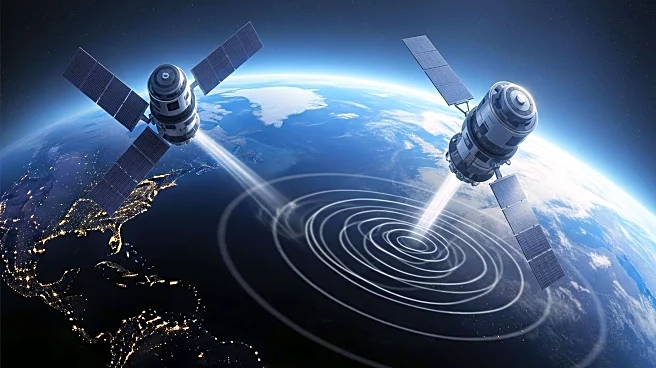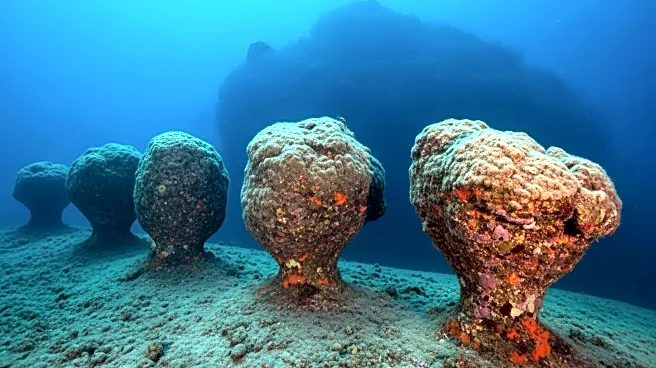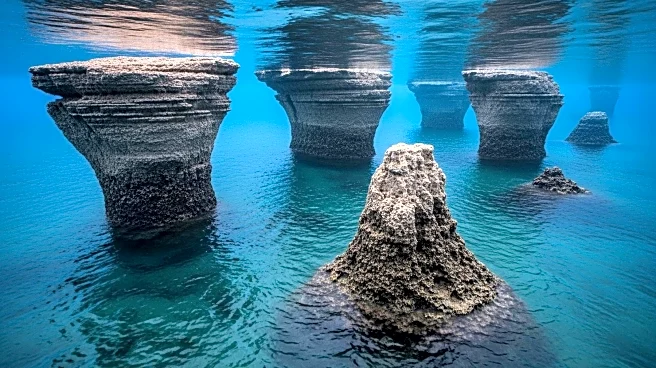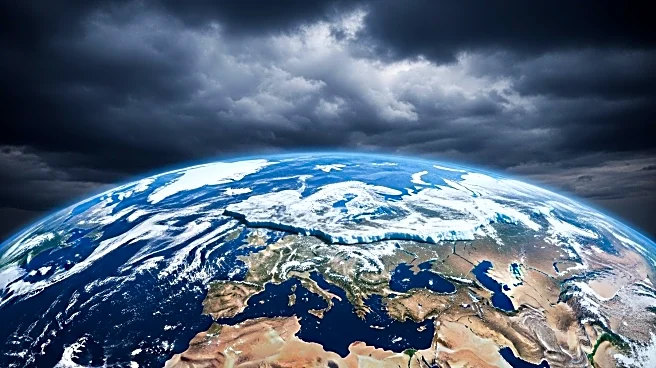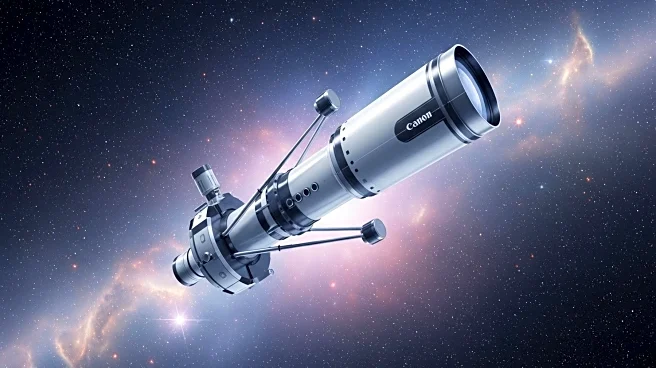What's Happening?
A recent study published in Nature has challenged the prevailing theories about the Snowball Earth hypothesis, which posits that Earth was entirely covered in ice during the Cryogenian Period, approximately 720 to 635 million years ago. Researchers, led by Nir Galili from the Geological Institute of Zurich and the Weizmann Institute, analyzed ooids—tiny laminated spheroids formed on the seafloor—to measure the concentration of organic carbon in ancient oceans. Their findings suggest that the levels of dissolved organic carbon were significantly lower than previously thought, indicating that Earth's carbon engine was idling when the planet froze. This contradicts earlier hypotheses that required higher concentrations of organic carbon to support the glaciation events.
Why It's Important?
The study's findings have significant implications for our understanding of Earth's climatic history and the conditions that led to global glaciation events. By providing empirical data on organic carbon levels, the research challenges existing models and calls for new explanations of how glaciations and oxygenation are linked. This could reshape scientific perspectives on the evolution of Earth's climate and the development of life during the Proterozoic Eon. The results may also influence future research directions in paleoclimatology and the study of ancient life forms, as they provide a more accurate picture of the environmental conditions during critical periods of Earth's history.
What's Next?
The study opens the door for new theoretical models to explain the link between glaciations and oceanic conditions during the Cryogenian Period. Researchers may focus on developing alternative hypotheses that account for the lower organic carbon levels and their impact on global climate. Additionally, further studies could explore the implications of these findings on the evolution of life, particularly the transition from unicellular to multicellular organisms. The scientific community is likely to engage in discussions and debates to refine our understanding of ancient climate dynamics and their role in shaping Earth's biological history.
Beyond the Headlines
The research highlights the importance of empirical data in challenging long-standing scientific theories. By using ooids as natural time capsules, the study provides a novel approach to understanding ancient oceanic conditions. This method could be applied to other geological periods to gain insights into Earth's climatic and biological evolution. The findings also underscore the complexity of Earth's climate system and the need for interdisciplinary approaches to unravel its history. As new data emerges, scientists may need to reconsider the assumptions underlying current climate models and their implications for understanding past and future climate change.



